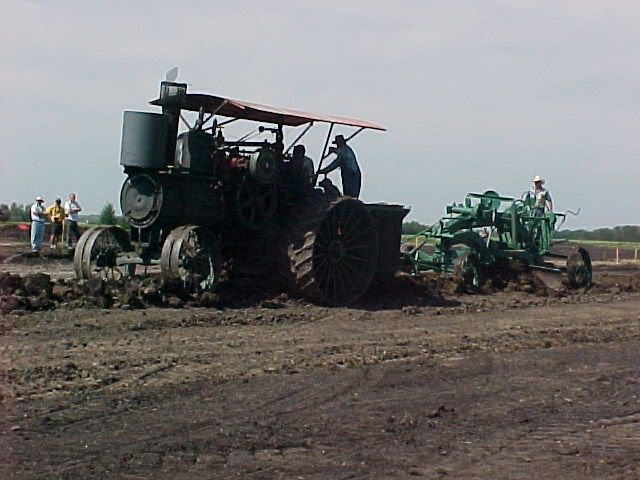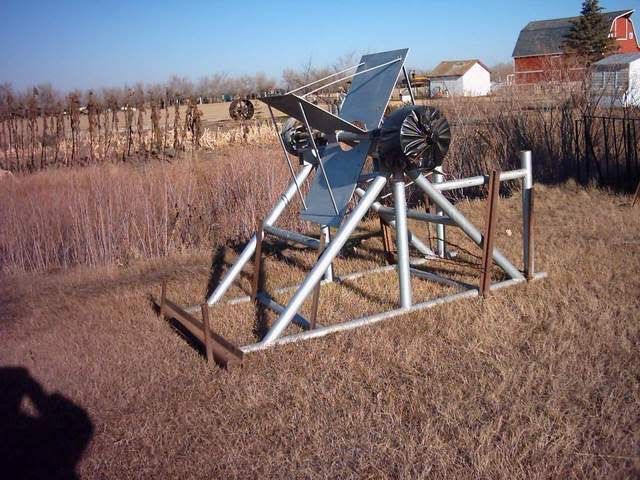Baker Fan
In the words of Pat Cahill
The Baker Fan has been in use since the early 1900's. It is a replica of the orginal fan invented by Abner D. Baker used in testing the Baker stream traction engines to determine the belt horsepower. Steam engines were used to supply power to run threshing machines, sawmill and other belt driven machines and also for pulling plows for breaking of sod for farm land.
After seeing a Baker Fan in operation at Irricana, Alberta in 1994 three men, Don Fox, Pat Cahill and George Yorga decided to construct one. A trip to Saskatoon where they have a Baker Fan at the W.D.M.was made where photographs and measurements were taken.
For the main frame oil drillers drill stem was used, the shaft and pulley came from an old Nicholas and Shepherd threshing machine,the fan blades are 24"x24"x1/4"sheet steel. There were many delays while searching for materials to construct the fan.
It was completed in1997-98 and presently sits at the Sukanen Ship Pioneer Village Museum,just to the west of the temporary station.
Resistance is produced by the fan blades moving air,the faster they rotate,creates more resistance and puts a bigger load on the tractor
It is amazing how hard this fan can make a tractor work, truely something to see in operation.
Site last updated: Jan 15 2005
©Sukanen Ship Pioneer Village and Museum, 2001,2002,2003,2004,2005
website by Gleim Web Design
I can see how this would put a load on an engine, but how would you get any measurement of horsepower from it? This is not unlike the method that I suggested in an earlier post, where a fan or rotor would rotate in a container full of fluid of a known viscosity and measurements of peak RPM would be taken and applied to some base line figures. (I think I actually seen one of these run a long time ago---thats probably where my suggestion came from)







